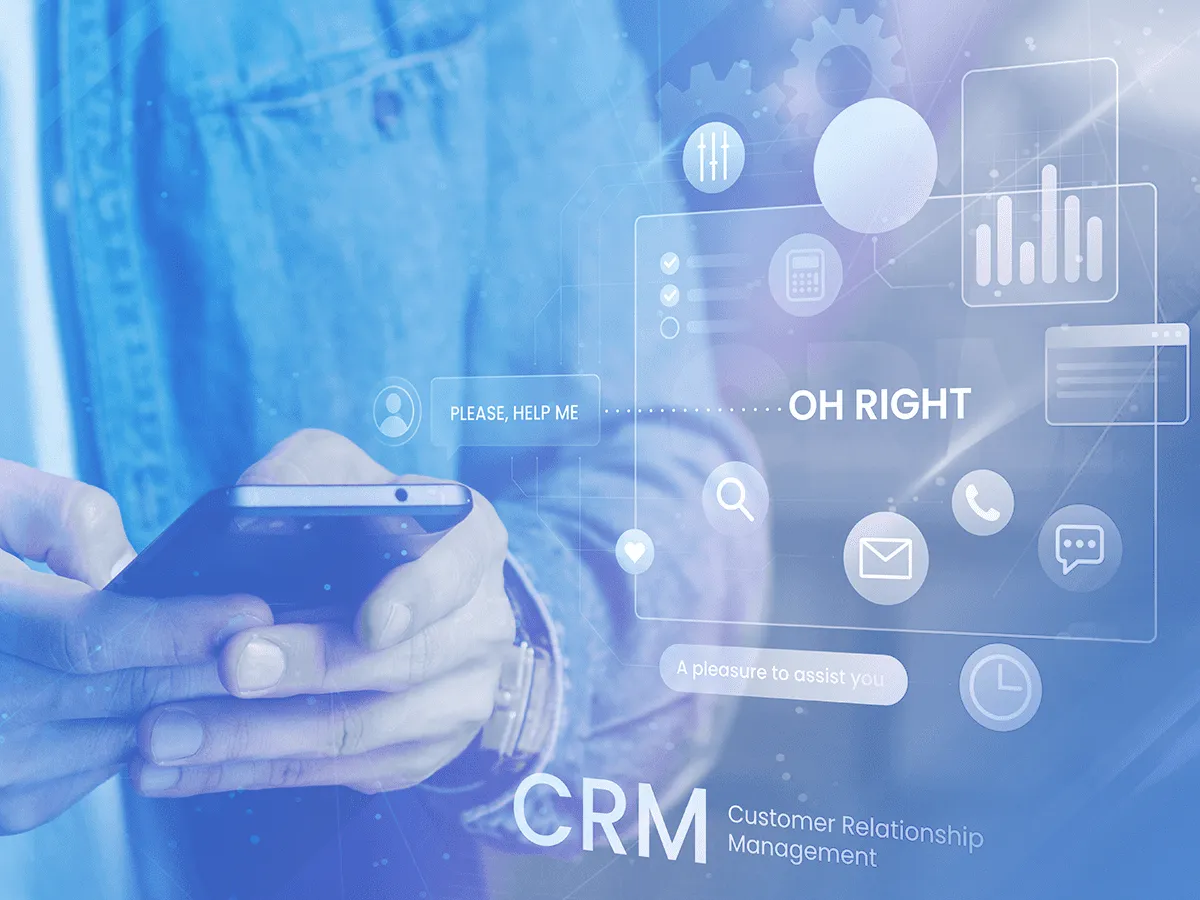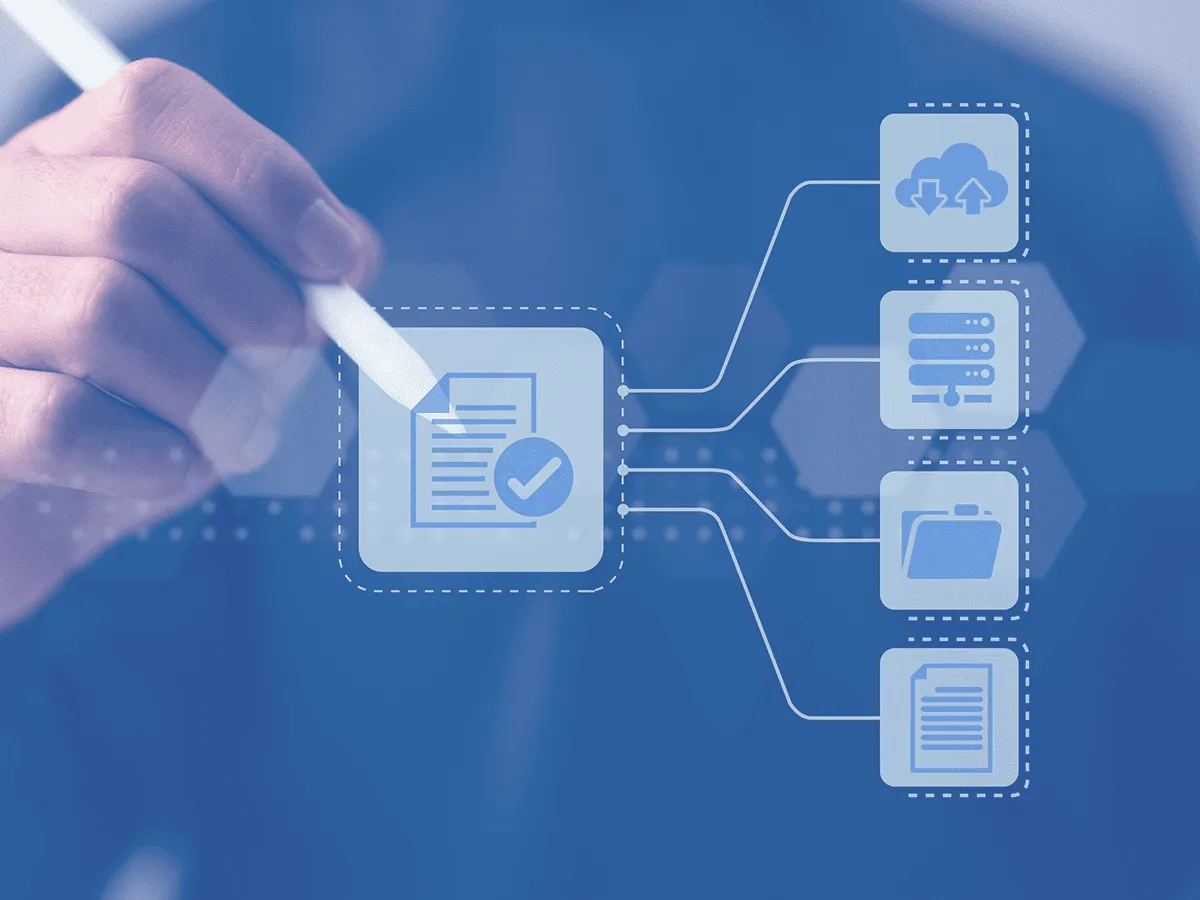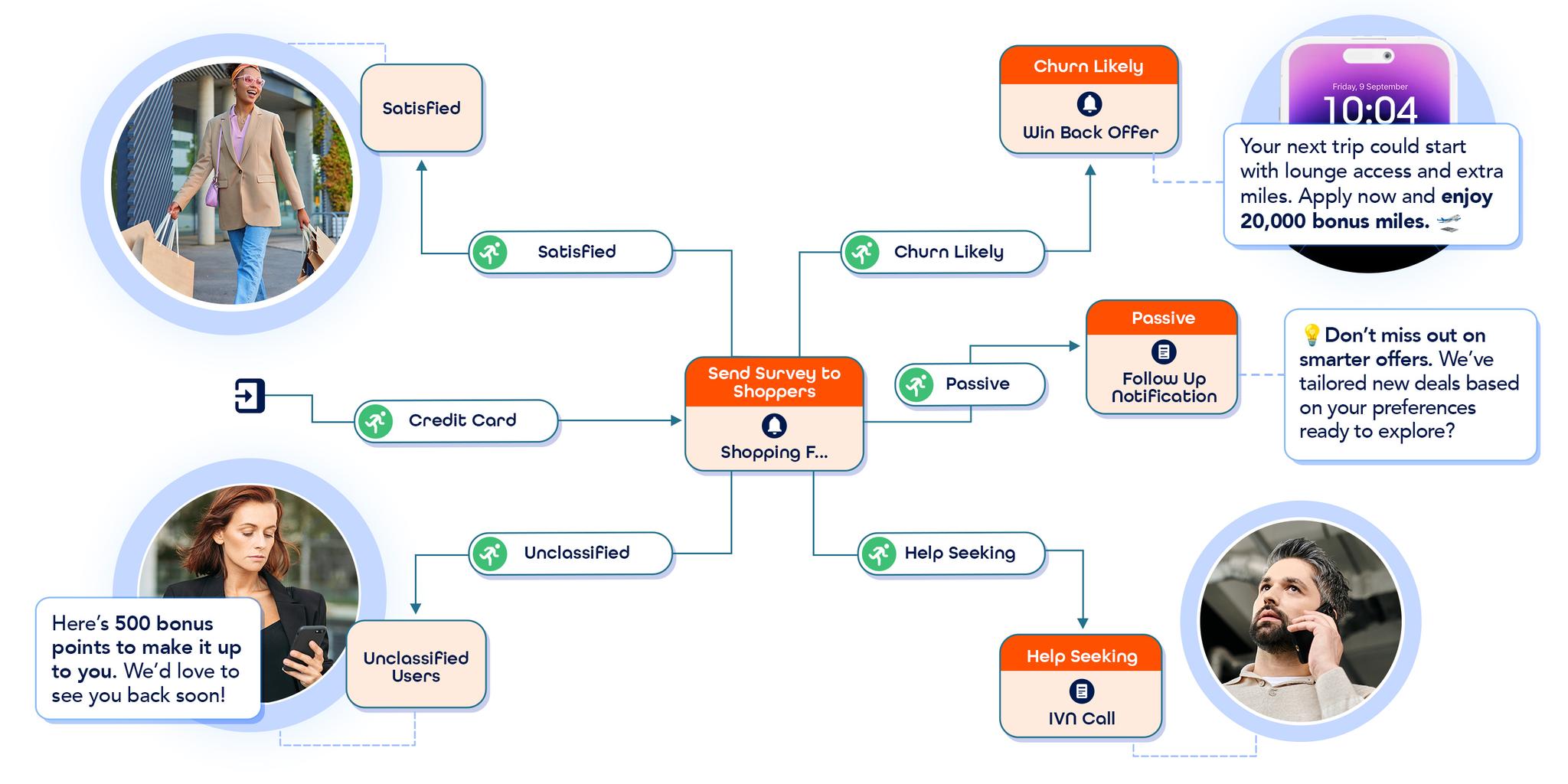Table of Contents
- Understanding the Foundation: What Are CDPs, CRMs, and DMPs?
- Customer Data Platform (CDP)
- Customer Relationship Management (CRM)
- Data Management Platform (DMP)
- Elevating Engagement with Event Streaming Platforms
- Benefits of Integrating Event Streaming with Other Platforms
- A 360-degree View of the Customer Journey
- Contextually Relevant Experiences at Every Touchpoint
- Enhances Real-time Interaction Management
- Let’s Join Forces to Help You Embrace the New Paradigm of Data-Driven Customer Engagement
72% of consumers say they only engage with personalized messaging, prompting businesses to continually research new ways of delivering personalized experiences that resonate with customers at every stage of their journey.
The key to achieving this level of personalization lies in collecting relevant customer data and analyzing it. For this reason, most companies use martech tools that enable them to make informed business decisions.

Customer Data Platforms (CDP), Customer Relationship Management (CRM), and Data Management Platforms (DMP) are utilized to create connected journeys and are highly popular among marketers.
However, one prominent technology has revolutionized the way marketers craft contextually relevant journeys – Event Streaming Platforms.
This blog post will take you on an inspiring journey where the synergies between Event Streaming and other platforms are explained, along with how they empower businesses to cater to customer needs throughout the entire lifecycle. Let’s uncover the extraordinary potential of ESPs together!
Understanding the Foundation: What Are CDPs, CRMs, and DMPs?
Before delving into the realm of ESPs, it is essential to grasp the meanings of other tools. CDPs, CRMs, and DMPs are all platforms that collect and utilize customer data for varying purposes.
Here is an in-depth examination of these platforms to delve into their capabilities.
Customer Data Platform (CDP)
A Customer Data Platform serves as a centralized repository that gathers, arranges, and harmonizes customer information from diverse sources, such as website interactions, email campaigns, social media, and offline touchpoints. Its core objective is to build a unified customer profile, presenting a comprehensive perspective of each individual’s engagements and behaviors across multiple channels.
Gartner underscores that CDPs enhance message timing, targeting, and the effectiveness of customer engagement. They also facilitate the analysis of individual customer behavior over time.
CDPs empower marketers to leverage customer data for various objectives, including:
- Segmentation: Marketers can establish dynamic segments based on a combination of customer attributes and behaviors, such as demographics, purchase history, browsing behavior, and more.
- Analytics: The CDP allows marketers to conduct various types of analysis on customer data, including descriptive, diagnostic, predictive, and prescriptive analytics.
- Activation: Marketers can utilize CDPs to transmit data or segments to different marketing platforms like email service providers, content management systems, advertising platforms, and social media platforms.
Customer Relationship Management (CRM)
CRM systems are tools focused on managing customer relationships, encompassing sales, marketing, and customer service. They offer a structured approach to storing and handling customer information, including contact details, purchase history, support tickets, and interactions.
While CRMs are essential for upkeeping data, they might lack the ability to aggregate and process data from multiple sources. On the other hand, CRM tools can serve different teams or departments within a business in ways such as:
- Sales teams utilize the CRM system to oversee their leads and opportunity pipelines, schedule appointments and follow-ups, send proposals and quotes, finalize deals, monitor sales performance, and more.
- Marketing teams can have the CRM system assist them in generating leads, executing campaigns, dispatching newsletters and promotions, tracking customer responses, measuring marketing ROI, and so forth.
- Customer service teams use CRMs to be instrumental in managing inquiries, resolving issues, providing support, gathering feedback, enhancing satisfaction, and more.
- Customers across teams can use CRM software to enhance customer retention, provide visibility, and engage in upselling and cross-selling opportunities.
Data Management Platform (DMP)
A DMP specializes in collecting, structuring, and analyzing extensive sets of anonymous audience data, primarily sourced from third-party channels. Diverging from CDPs that concentrate on individual-level data, DMPs handle vast datasets to facilitate more precise advertising and audience segmentation for marketing campaigns.
Marketers can utilize DMPs in the following ways:
- Audience Expansion: Through the DMP, marketers expand their reach by identifying and acquiring new customers who align with existing profiles or segments. The DMP locates and taps into these prospects from diverse sources like publishers, ad networks, and exchanges.
- Refined Targeting: Using the DMP, marketers enhance audience precision, delivering personalized ads across channels like display, video, social, and mobile. The DMP optimizes strategies through contextual, behavioral, and predictive data.
- Performance Insights: The DMP empowers marketers by analyzing metrics like reach, engagement, conversion, and more for customer segments. This aids in gauging campaign impact and effectiveness.
Elevating Engagement with Event Streaming Platforms

Customers today expect personalized experiences across all digital channels within a brand. According to Microsoft’s research, 51% of consumers feel this is important. To meet this expectation, businesses need to collect customer data in real time and take instant actions.
Managing and processing massive amounts of data generated at unprecedented speeds poses a significant challenge. In this context, Event Streaming Platforms (ESPs) play a crucial role in efficiently and effectively handling this data deluge.
Event streaming represents a data processing paradigm that involves continuous, real-time processing of events as they unfold. These events are discrete pieces of data, each with a timestamp, that signify specific actions or state changes within a system. Examples of events include user interactions, application updates, sensor readings, transactions, and social media posts.
By harnessing real-time data processing capabilities, ESPs manage and analyze data as it’s generated or received. Unlike traditional batch processing, which accumulates and processes data at fixed intervals, this approach provides real-time insights and facilitates actions based on the most up-to-date information available.
ESPs’ versatility empowers businesses to construct event-driven architectures, where different components of the system respond independently to events. This decoupled approach enhances system resilience and scalability, enabling them to handle spikes in data volume without sacrificing performance.
Furthermore, ESPs play a pivotal role in enabling real-time analytics and machine learning applications. Businesses can extract valuable insights by analyzing event data as it traverses the platform, enabling them to discern patterns, optimize processes, and deliver personalized experiences to customers precisely when needed.
Benefits of Integrating Event Streaming with Other Platforms
Integrating ESPs with other marketing technologies allows businesses to blend real-time event data with historical customer information, empowering personalized responses to be triggered and advertising efforts to be fine-tuned.
This ultimately enhances customer satisfaction, drives business success, and offers businesses the chance to transform each interaction into a delightful customer experience.
A 360-Degree View of the Customer Journey
The unified power of Event Streaming and other tools empowers businesses to maintain a holistic view of customer interactions across numerous channels, including websites, mobile apps, social media, and offline touchpoints.
This comprehensive perspective facilitates seamless experiences, allowing customers to transition between channels without losing context.
For instance, if a customer begins exploring products on a mobile app and later visits the website, event streaming ensures that their preferences and browsing history stay synchronized.
Contextually Relevant Experiences at Every Touchpoint
Event data continuously flows, reflecting customer interactions across various touchpoints. By aligning these events with different stages of the customer journey, businesses can construct a comprehensive understanding of how customers interact with their brand over time.
This journey mapping identifies critical touchpoints and moments where personalized interactions yield the most significant impact. Here is an example that illustrates this level of personalization:
- A customer is browsing a travel website and looking for flights to Paris.
- The system detects their location, search history, and loyalty status and offers a personalized package deal with a hotel and car rental in Paris on the website.
- If the customer doesn’t book the deal, the system sends them an email with a limited-time 10% discount on the package price.
- Intrigued by the offer, the customer clicks on the email link and returns to the website.
- The system follows up with a pop-up message congratulating them on their smart choice.
- This gesture leaves the customer feeling excited and happy with their travel plan.
Enhances Real-Time Interaction Management
Real-time interaction management involves delivering personalized and relevant messages to customers across multiple channels instantly. Event streaming with tools like CRM, CDP, and DMP supports this by providing a platform to collect, process, and deliver event data at scale.
Moreover, businesses can utilize real-time analytics and machine learning to segment customers, predict their behavior, and optimize their messages.
Consider this example:
- A customer exceeds their monthly data allowance. The system sends them an SMS, explaining potential extra charges and offering a one-time upgrade to a higher plan with unlimited data.
- If the customer doesn’t respond, the system sends another SMS with a limited-time 20% discount on the upgrade fee.
- Tempted by the offer, the customer chooses the upgrade with the discount code.
- The system follows up with a welcome SMS, celebrating their new plan choice.
- This gesture leaves the customer feeling relieved and satisfied with their internet provider.
Let’s Join Forces to Help You Embrace the New Paradigm of Data-Driven Customer Engagement
As a prominent marketing technology company specializing in customer journey orchestration, we offer our partners customizable and easily integrable solutions, complete with event streaming and real-time interaction management capabilities.
Through Event Streaming, you can seize the most opportune business moments, craft contextually relevant journeys for your customers, and execute actions across multiple channels at the same pace as your customers.
Want to discover how we can assist you in effectively connecting with your customers at the right time and through the right channels? Get in touch with us today!
Frequently Asked Questions (FAQ)
1. What is the role of personalization in modern marketing strategies, and how do businesses achieve it?
72% of consumers say they only engage with personalized messaging, which has pushed businesses to adopt data-driven marketing strategies that meet these expectations at every stage of the customer journey. To reach this level of personalization, companies need to collect relevant customer data and analyze it effectively. Martech tools such as CDPs, CRMs, and DMPs have become essential components of this process, providing the infrastructure to unify data, gain insights, and activate personalized marketing campaigns across multiple channels.
2. What are the functions of CDP, CRM, and DMP platforms, and how do they support personalized marketing?
A Customer Data Platform (CDP) centralizes customer data from multiple sources to build unified customer profiles. This enables segmentation, analytics, and data activation, which are essential for delivering personalized experiences. CRM systems focus on managing customer relationships by supporting sales, marketing, and customer service operations with structured customer information like interactions and transaction history. Meanwhile, DMPs specialize in gathering anonymous third-party data for broad audience segmentation, ideal for programmatic advertising and refining targeting. Together, these platforms offer foundational capabilities that allow marketers to design more intelligent, customer-focused campaigns.
3. How does an Event Streaming Platform (ESP) elevate marketing beyond traditional tools?
Event Streaming Platforms revolutionize customer engagement by enabling businesses to process real-time data—known as “events”—as they happen. These events, such as app clicks, form submissions, or location updates, carry contextual insights that can be acted upon instantly. Unlike batch processing, ESPs provide a continuous flow of actionable data, which supports real-time interaction management, predictive analytics, and dynamic campaign execution. This transforms ESPs into a powerful engine for creating hyper-personalized and timely experiences, allowing brands to respond at the exact moment customers demonstrate intent.
4. What makes ESPs particularly effective when integrated with CDP, CRM, and DMP platforms?
When ESPs are combined with platforms like CDPs, CRMs, and DMPs, businesses gain a complete and dynamic understanding of their customers. This integration blends real-time data with historical insights to offer a 360-degree customer view. With this unified perspective, companies can execute smarter segmentation, refine targeting, and automate personalization across all touchpoints. For example, real-time ESP signals can trigger timely email campaigns from the CDP, inform CRM-driven outreach by sales reps, or adjust DMP-powered ad bidding strategies—all within seconds of an event occurring.
5. How does event streaming help deliver contextually relevant experiences throughout the customer journey?
By aligning real-time events with customer lifecycle stages, event streaming allows businesses to deliver personalized offers and messages exactly when customers are most likely to respond. Consider a customer browsing travel deals: with ESPs, the system can detect their interest, send a timely email with a relevant discount, and follow up with a pop-up upon return. This kind of journey mapping ensures no moment of intent is missed and each interaction is tailored to the customer’s context, improving engagement and increasing the likelihood of conversion.
6. What are the benefits of event streaming for real-time interaction management?
Event streaming transforms real-time interaction management by enabling personalized engagement across all channels in milliseconds. When integrated with other martech tools, it allows marketers to analyze behaviors, predict outcomes, and trigger next-best actions instantly. For example, if a telco customer exceeds their data limit, the system can send an offer for a new plan, follow up with a discount if they don’t respond, and confirm the upgrade with a welcome message. This responsive, intelligent journey enhances customer satisfaction and drives stronger brand loyalty.
7. Why should businesses invest in event streaming as part of their customer engagement strategy?
As consumers increasingly expect personalized, real-time experiences, event streaming offers the infrastructure to meet those demands. It empowers businesses to act on live data, adapt to customer behaviors instantly, and create journeys that evolve with each customer interaction. The combination of ESPs with CDPs, CRMs, and DMPs provides unmatched agility and intelligence, turning fragmented customer data into cohesive, actionable strategies. For organizations aiming to lead in customer experience, event streaming is not just an enhancement—it’s becoming a necessity.








